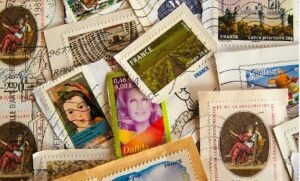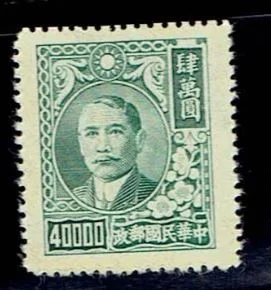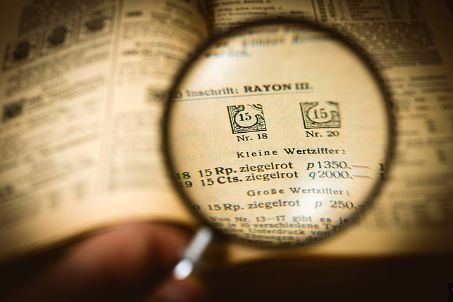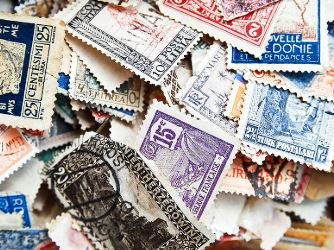Stamp collecting, once considered a beloved and timeless hobby, now faces questions about its future in a rapidly changing digital age. As the world becomes more connected through technology, many wonder: What is the future of stamp collecting? Is it a vibrant legacy to be cherished, or is it becoming an obsolete pursuit that will fade away with time? In this article, we’ll explore both sides of the argument and evaluate how stamp collecting might evolve in the coming years.
The Enduring Appeal of Stamp Collecting: A Vibrant Legacy
Despite the rise of digital communication and the decline of traditional mail systems, the future of stamp collecting is far from bleak for many collectors. In fact, for some, it is a hobby that offers a deep connection to history, culture, and art. The appeal of collecting stamps has always been more than just the monetary value; it’s about the thrill of discovering new pieces, preserving the past, and connecting with a global community of like-minded enthusiasts.

1. A Connection to History
One of the key reasons the future of stamp collecting remains vibrant is its connection to history. Stamps are more than just small pieces of paper with postage—they are miniature works of art that reflect the culture, politics, and significant events of their time. Collectors often see stamps as windows into history, offering a tangible connection to moments that shaped the world.
For instance, stamps commemorating historical events, famous figures, or national milestones can hold a deep personal meaning for collectors. As long as history continues to unfold, new stamps will be created to capture these moments, giving collectors opportunities to build their collections. The future of stamp collecting is closely tied to how we continue to value history and the stories these stamps tell.
When you’re out running errands, you might wonder, “Does Big Y sell stamps?” Big Y, a regional supermarket chain with locations in the northeastern United States, is a convenient place to grab groceries, household goods, and even a few unexpected items.
2. The Growing Popularity of Digital and Online Communities
Another reason the future of stamp collecting seems promising is the growing interest in online communities and digital platforms. The internet has allowed collectors to connect, share their collections, and even buy and sell stamps more easily than ever before. With the help of social media, online forums, and auction sites, stamp collecting has become a global activity that can be pursued from anywhere in the world.
Additionally, the digital age has made stamp collecting more accessible to younger generations. Mobile apps and websites provide resources for beginners, enabling them to catalog their collections, learn about rare stamps, and track trends in the philatelic market. The combination of technology and tradition could help ensure the future of stamp collecting as a vibrant and evolving hobby.
3. Investment Opportunities
For many collectors, the future of stamp collecting may also be intertwined with its potential as an investment. Rare and limited-edition stamps have historically appreciated, and this trend shows no signs of stopping. The market for collectible stamps continues to attract investors and collectors looking to diversify their portfolios. Auction houses and online platforms for buying and selling stamps are thriving, and many stamps—especially those with historical significance or rarity—continue to command high prices.

Stamp collecting as an investment may play a significant role in securing the future of stamp collecting as a lasting and respected pursuit. Whether people collect stamps for personal enjoyment or financial gain, the enduring demand for rare and valuable pieces suggests that this hobby will continue to evolve.
The Decline of Traditional Mail: The Argument for an Obsolete Pursuit
While there are many reasons to be optimistic about the future of stamp collecting, there are also valid concerns about its relevance in a rapidly changing world. The rise of digital communication, the decline of traditional mail, and changing cultural attitudes have all raised questions about whether the future of stamp collecting will continue to be as vibrant as it once was.
1. The Decline of Physical Mail
Perhaps the most significant factor influencing the future of stamp collecting is the decreasing use of physical mail. As email, text messages, and social media have become the preferred modes of communication, the need for physical postage has diminished significantly. With the rise of e-commerce, people are still receiving packages, but fewer personal letters and postcards are being sent through the postal system.
As postal services around the world decrease their operations, fewer new stamps are being issued, and the role of stamps in daily life has shifted. The future of stamp collecting may depend on how much value future generations place on physical mail and the role stamps will play in that. Will stamps continue to be seen as a collectible, or will they simply be relics of the past?
2. Competition from Other Hobbies and Digital Alternatives
Stamp collecting, once a staple of leisure activities, now competes with a wide variety of other hobbies and digital entertainment options. In a world full of streaming services, video games, and social media, younger generations may find it difficult to connect with a hobby that requires patience, dedication, and physical storage space.
Additionally, digital alternatives to stamp collecting are emerging, with digital stamps or NFTs (non-fungible tokens) gaining popularity in some circles. These digital collectibles allow for instant ownership transfer and don’t require any physical space to store. As these alternatives rise in prominence, it’s unclear how traditional stamp collecting will fit into this new digital landscape.

3. The Aging Collector Demographic
Another concern for the future of stamp collecting is the aging demographic of current collectors. Many dedicated philatelists are older, and younger people may not be as interested in the hobby. While the internet has made stamp collecting more accessible, it hasn’t necessarily translated into a younger generation of collectors.
If the hobby is to thrive, it will need to adapt to changing interests and attitudes. Some experts worry that the future of stamp collecting could be tied to an increasingly niche group of enthusiasts, potentially limiting its growth and sustainability.
The Future of Stamp Collecting: Can Tradition and Technology Coexist?
Despite these challenges, it’s not all doom and gloom for the future of stamp collecting. The question is whether the hobby can evolve to meet the demands of modern times while still preserving the rich tradition and history that has made it so beloved.
1. Embracing Technology and Innovation
For the future of stamp collecting to be truly vibrant, it will need to embrace new technologies and innovations. This could include the use of augmented reality (AR) or virtual platforms where collectors can experience stamps in entirely new ways. For instance, AR could bring stamps to life by providing additional historical context or interactive elements that enhance the collection experience.
Virtual stamp exhibitions and online forums also allow for greater community engagement, making the hobby more inclusive and accessible to people around the world. The future of stamp collecting may involve a hybrid approach, blending traditional collecting with cutting-edge technology to create an enriched and dynamic experience.
2. A Focus on Sustainability
As the world becomes more focused on sustainability, the future of stamp collecting could also involve a shift toward environmentally conscious practices. Stamp manufacturers may explore eco-friendly materials, and the hobby may move toward digital records and virtual exhibitions, reducing the reliance on paper and physical products. This could help attract younger generations who are more concerned with sustainability.
3. Continued Preservation of Postal History
Finally, the future of stamp collecting may lie in its role as a means of preserving postal history. As fewer people use physical mail, stamps will become increasingly important as historical artifacts. The preservation and study of stamps, both rare and common, could become more deeply valued as a way of keeping our communication history alive for future generations.

Conclusion: The Future of Stamp Collecting – A Vibrant Legacy or an Obsolete Pursuit?
So, what does the future hold for stamp collecting? Is it a vibrant legacy to be cherished for generations to come, or is it destined to become an obsolete pursuit? The answer likely lies somewhere in between. While traditional stamp collecting faces challenges due to the decline of physical mail and the rise of digital alternatives, the hobby still holds immense value in terms of history, artistry, and community. With the right balance of tradition and innovation, the future of stamp collecting can remain vibrant and relevant for years to come.
The key to preserving the future of stamp collecting will be adapting to the changing world while honoring the traditions that make stamp collecting such a rich and rewarding pursuit. Whether it thrives as a niche hobby or evolves into something entirely new, one thing is certain—stamp collecting will continue to have a place in the hearts of those who appreciate the art of history captured on paper.




